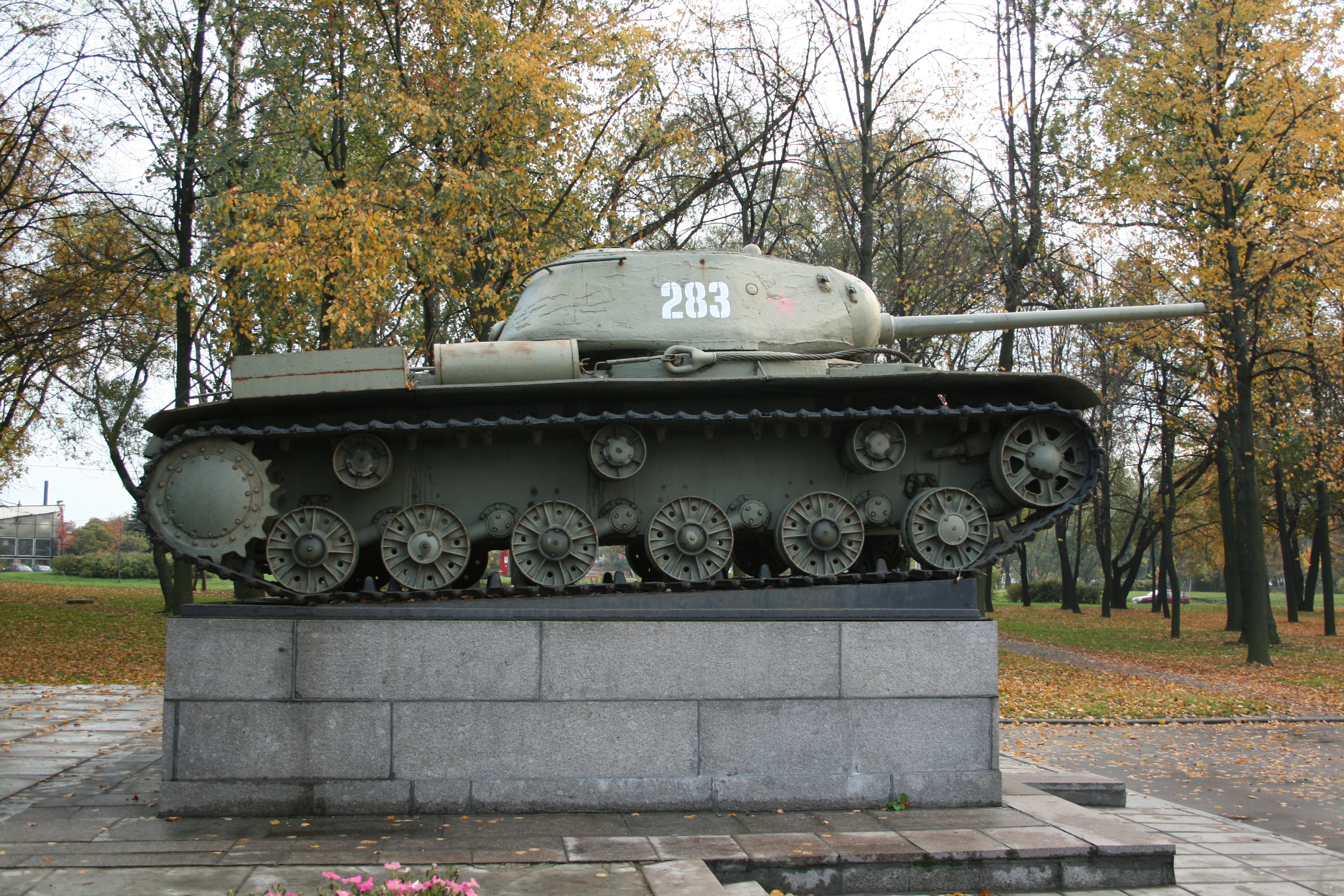IS-2 on:
[Wikipedia]
[Google]
[Amazon]
The IS-2 (russian: ИС-2, sometimes
 The
The
romanized
Romanization or romanisation, in linguistics, is the conversion of text from a different writing system to the Roman (Latin) script, or a system for doing so. Methods of romanization include transliteration, for representing written text, and ...
as JS-2The series name is an abbreviation of the name Joseph Stalin
Joseph Vissarionovich Stalin (born Ioseb Besarionis dze Jughashvili; – 5 March 1953) was a Georgian revolutionary and Soviet Union, Soviet political leader who led the Soviet Union from 1924 until his death in 1953. He held power as Ge ...
(russian: Иосиф Сталин); IS-2 is a direct transliteration
Transliteration is a type of conversion of a text from one script to another that involves swapping letters (thus ''trans-'' + '' liter-'') in predictable ways, such as Greek → , Cyrillic → , Greek → the digraph , Armenian → or L ...
of the Russian abbreviation, while JS-2 is an abbreviation of the English or German form of Stalin's name.) is a Soviet
The Soviet Union,. officially the Union of Soviet Socialist Republics. (USSR),. was a List of former transcontinental countries#Since 1700, transcontinental country that spanned much of Eurasia from 1922 to 1991. A flagship communist state, ...
heavy tank
Heavy tank is a term used to define a class of tanks produced from World War I through the end of the Cold War. These tanks generally sacrificed mobility and maneuverability for better armour protection and equal or greater firepower than tanks ...
, the first of the IS tank series named after the Soviet leader Joseph Stalin
Joseph Vissarionovich Stalin (born Ioseb Besarionis dze Jughashvili; – 5 March 1953) was a Georgian revolutionary and Soviet Union, Soviet political leader who led the Soviet Union from 1924 until his death in 1953. He held power as Ge ...
. It was developed and saw combat during World War II
World War II or the Second World War, often abbreviated as WWII or WW2, was a world war that lasted from 1939 to 1945. It involved the World War II by country, vast majority of the world's countries—including all of the great power ...
, and saw service in other Soviet allied countries after the war.
Design and production
Object 237 KV-85 and IS-85/IS-1
KV-1
The Kliment Voroshilov (KV) tanks are a series of Soviet heavy tanks named after the Soviet defence commissar and politician Kliment Voroshilov who operated with the Red Army during World War II. The KV tanks were known for their heavy armour pr ...
was criticized by its crews for its poor mobility and the lack of a larger caliber gun than the T-34
The T-34 is a Soviet medium tank introduced in 1940. When introduced its 76.2 mm (3 in) tank gun was less powerful than its contemporaries while its 60-degree sloped armour provided good protection against anti-tank weapons. The C ...
medium tank. It was much more expensive than the T-34, without having greater combat performance. Moscow ordered some KV-1 assembly lines to shift to T-34 production, leading to fears that KV-1 production would be halted and the SKB-2 design bureau, led by Kotin, closed. In 1942, this problem was partially addressed by the KV-1S tank, which had thinner armor than the original, making it lighter and faster. It was competitive with the T-34 but at the cost of no longer having the heavier armor. Production of the KV-1S was gradually replaced by the SU-152 and ended in April 1943.
The capture of a German Tiger
The tiger (''Panthera tigris'') is the largest living Felidae, cat species and a member of the genus ''Panthera''. It is most recognisable for its dark vertical stripes on orange fur with a white underside. An apex predator, it primarily pr ...
tank in January 1943 led to a decision to develop a new heavy tank, which was given the codename Object 237. Before Object 237 had time to mature, intense tank fighting in the summer of 1943 demanded a response. Dukhov's team was instructed to create a stopgap
{{Short pages monitor